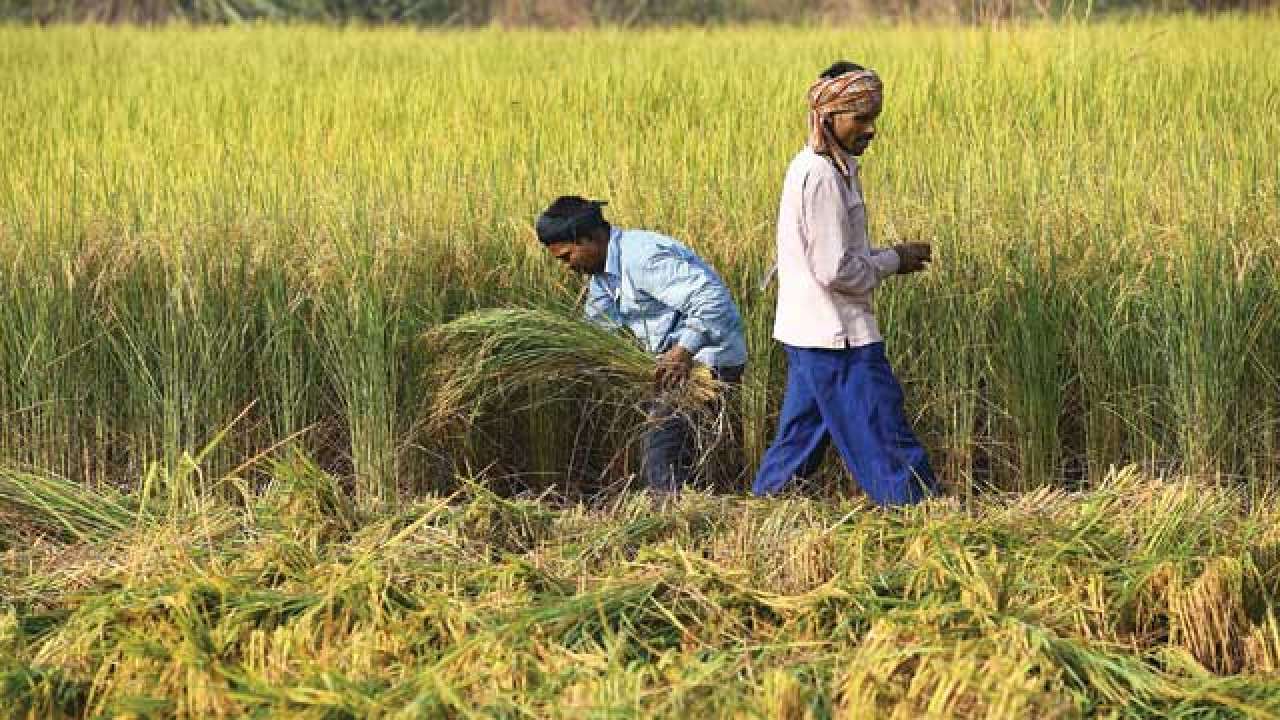
At a time when the Minister for Agriculture & Farmers Welfare Radha Mohan Singh is holding pledge-taking ceremonies wherein farmers are made to take an oath to double their income in the next five years, a recent report by CRISIL points to the denial of a rightful income as the major reason behind the agrarian crisis sweeping through the country.
“While the average annual growth in Minimum Support Price (MSP) was 19.3 per cent between 2009 and 2013, it was only 3.6 per cent between 2014 and 2017,” the report states. This minimal increase in MSP does not even correspond to the annual rise in DA for government employees. In other words, farmers are being deliberately paid less, kept impoverished. What farmers don’t realise is that every time they take to cultivation, they actually cultivate losses.
In an interesting analysis of the Reserve Bank of India (RBI) data, researcher Rakesh Dubbudu has very conclusively shown that in the 30 year period between 1985-86 and 2016-17, MSP for paddy increased by just 10 times. In the same period, governments own tax revenues grew by 50 times. Government employees got the benefit of three pay commissions in the same period, with their salaries jumping manifold. In addition, as per the 7th Pay Commission, employees get the benefit of 108 allowances in total. Whereas MSP only covers the cost of production, and in addition pays for the labour of a farming family. It does not provide any profit over the cost of production.
I have earlier shown that MSP for wheat has increased 19 times between 1970 and 2015, a period of 45 years. In the same period the basic pay of government employees has gone up by 120 to 150 times; of college lecturers/professors by 150 to 170 times; of school teachers by 280 to 320 times; and of corporate employees by 300 to 1,000 per cent. If MSP had increased in the same proportion as that of other sections of the society to maintain income parity, wheat and paddy prices should have been raised by a minimum of 100 times. But what the farmers have received so far is only an increase of 19 times in case of wheat.
In agriculture, prices of farm inputs are determined by the government, and the output prices are also not in the hands of farmers. They are, in reality, being penalised to cultivate food. As John F Kennedy had once remarked: “Farmer is the only man in our economy who buys everything at retail, sells everything at wholesale, and pays for freight both ways.”
The match is therefore fixed against the farmers. Whatever be the level of investments, including new technology, improved crop varieties, crop insurance, expansion in irrigation, unless the output prices are profitable for farmers he will eventually slip into a debt trap. This is what has happened world over. A study by a French public health authority, for instance, has shown that French farmers face an increased risk of committing suicide because of falling incomes. Accordingly, a majority of farmers earned less than Euro 350 a month. In India, as per the Economic Survey 2016, the average income of a farming family in 17 States is Rs 20,000 a year.
Even MSP is no saviour. As per the Shanta Kumar Committee report, MSP benefits only 6 per cent farmers. What is not known is that while MSP is being deliberately kept low to keep inflation under control, as many as 94 per cent farmers do not even avail MSP and remain dependent on the exploitative markets. And if the markets were supportive, I see no plausible reason for the farmer’s suicides to continue at a frightening pace.
Now let’s look at the markets. On October 6, for instance, the market prices quoted for moong (green gram) in Ajmer, Rajasthan, prevailed between Rs 3,000 to Rs 4,500 per quintal. This was 25 per cent less than the MSP of Rs 5,575 per quintal. Low prices have prevailed across the spectrum. Policymakers blame the regulated APMC markets for the prices remaining low. But the unified electronic platform offering model prices is still worse. The modal price prevailed at a low of Rs 3,900 to Rs 4,100 per quintal. It’s therefore quite obvious that neither MSP nor markets (including the electronic platform) have been favourable to farmers.
In fact, MSP for moong is actually less than the production cost that the Commission for Agricultural Costs and Prices (CACP) itself has worked out. MSP is announced for about 24 crops every year, but effectively it works for only two crops — wheat and paddy — for which the Food Corporation of India (FCI) undertakes procurement operations. Under such dismal situation, where subdued prices have hit the farm livelihoods over the past few decades, I don’t understand how farmers’ can be expected to double their income by simply making a pledge. If wishes were horses, beggars would ride. If taking an oath could raise farm incomes, there would have been no need for government’s marketing interventions.
The author is an agricultural policy analyst. Views expressed are personal.